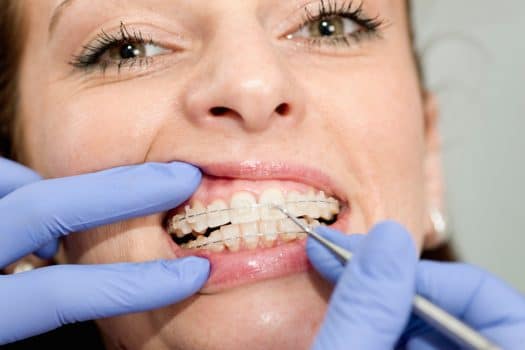All About All Star Family Orthodontics
All About All Star Family Orthodontics
Blog Article
Top Guidelines Of All Star Family Orthodontics
Table of ContentsA Biased View of All Star Family OrthodonticsNot known Facts About All Star Family OrthodonticsThe Only Guide for All Star Family OrthodonticsWhat Does All Star Family Orthodontics Mean?All Star Family Orthodontics for Dummies

In addition, we offer flexible therapy schedules, versatile repayment alternatives and an enjoyable, delightful experience.
An orthodontist is a dentist trained to diagnose, avoid, and treat teeth and jaw irregularities. Orthodontists work with people of all ages, from youngsters to adults.
Malocclusion, or misaligned teeth, can result in dental concerns, consisting of tooth degeneration, gum disease, and difficult or uncomfortable eating. But not every person is born with straight teeth. If you have a bad bite or big rooms in between your teeth, you might wish to speak with a dental practitioner specializing in orthodontic care.
The Of All Star Family Orthodontics
(Photo Credit History: DigitalVision/Getty Images) Orthodontists utilize dealt with and removable dental devices, like dental braces, retainers, and bands, to transform the placement of teeth in your mouth. Orthodontic therapy is for dental abnormalities, consisting of: Crooked teethBite troubles, like an overbite or an underbiteCrowded teeth or teeth that are also far apartJaw misalignmentThe goal of orthodontic therapy is to improve your bite.
While you could believe of orthodontists as primarily for youngsters or young adults that require braces, they can fix oral troubles at any type of age. Orthodontists attend college, oral school, and orthodontic institution.
, but not all dentists are orthodontists. They focus on two areas: How to appropriately and safely move teeth Just how to correctly guide growth in the teeth, jaw, and faceOnce an orthodontist has finished training, they have the option to come to be board licensed.
An Unbiased View of All Star Family Orthodontics
Imbalance, or malocclusion, is the most common factor people see an orthodontist. Malocclusion is typically treated with: Your orthodontist connects metal, ceramic, or plastic square bonds to your teeth.
If you have only small malocclusion, you might have the ability to use clear dental braces, called aligners, rather of traditional braces. Some people need a headwear to aid relocate teeth right into line with pressure from outside the mouth. After dental braces or aligners, you'll need to put on a retainer. A retainer is a personalized gadget that maintains your teeth in location.

You might need to see an orthodontist if you have: Crowding or otherwise adequate room for all of your teethOverbite, when your top teeth come your bottom teethUnderbite, when your bottom teeth are too far forwardSpacing or concerns with gapsCrossbite, which is when your upper teeth fit behind your bottom teeth when your mouth is closedOpen her explanation bite or an upright void in between your front base and top teethMisplaced midline, when the center of your base and top teeth don't line up Correcting an oral malocclusion can: Make biting, eating, and speaking easierImprove the symmetry of our face and your overall appearanceEase pain from temporomandibular joint conditionsSeparate your teeth and make them easier to clean up, aiding protect against dental caries or cavities It's often a dentist who initially notices misaligned teeth throughout a routine test.
All Star Family Orthodontics - An Overview
During your very first orthodontic assessment, you'll likely have: A dental examPhotos taken of your face and smileDental X-raysPanoramic (360 level) X-rays of your face and headImpressions to produce mold and mildews of your teethThese tests will assist your orthodontist understand just how to continue with your treatment. An orthodontist is a dental expert that's had training to treat your teeth and jaw.
Orthodontists may carry out surgery, exams,X-rays, - old bridge alignersand more to aid you achieve an extra comfortable, healthier smile. An orthodontist is focused on your bite, so something like a chipped tooth would be dealt with by a dental expert. Orthodontists are dental experts but not all dental professionals are orthodontists. Orthodontists are concentrated on your bite, or the method your teeth meshed, and the straightness of your teeth.

This preliminary consultation entails a visual evaluation of your teeth and attack, X-rays, and possibly also 3D scans. By thoroughly evaluating these aspects, the orthodontist can pinpoint any type of misalignments, crowding, spacing concerns, or jaw discrepancies. Once a clear photo is developed, the orthodontist will certainly discuss personalized therapy alternatives. This conversation will certainly cover the kind of dental braces or aligners suggested (typical steel braces, clear aligners like Invisalign, etc), the estimated treatment duration, and any possible challenges or adverse effects.
All Star Family Orthodontics Things To Know Before You Buy
, orthodontists have a varied toolkit at their disposal. These reliable dental braces utilize a system of brackets adhered to the teeth and attached by wires.
Clear aligners, like Invisalign, are a prominent option for individuals looking for a more discreet treatment choice. These detachable trays are personalized to considerably change the teeth's setting. Headgear might be used along with braces or aligners to apply extra targeted forces, specifically for dealing with jaw disparities. In cases of slim jaws, palatal expanders can be used to develop room for appropriate tooth positioning.
Report this page